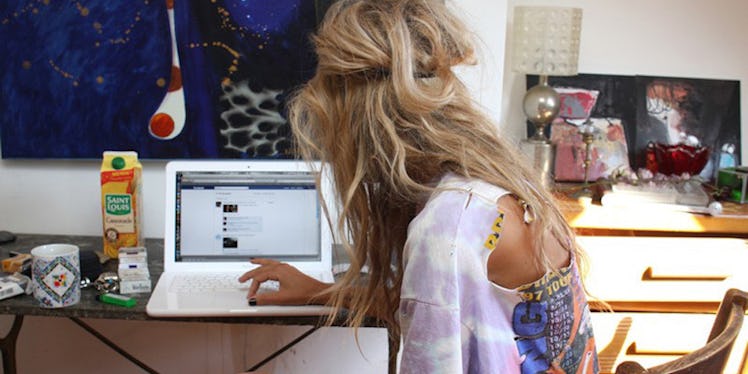Facebook now allows its over 200 million US users to freely pick their own gender identity on profile pages, rather than choosing from a pre-selected list.
Users now have the freedom to write what gender identity feels true to who they are, rather than select from a pre-populated list.
This change comes after receiving feedback from users saying its existing gender options were not fully inclusive of all people.
A status posted on Facebook Diversity's page stated:
We recognize that some people face challenges sharing their true gender identity with others, and this setting gives people the ability to express themselves in an authentic way.
In addition to writing a custom gender, users may choose from three pronouns they prefer others use to refer to them as: female, male or neutral. Facebook gives a sample of how this would look differently depending upon your selection with this example birthday notification:
Female: “Wish her a happy birthday!” Male: “Wish him a happy birthday!” Neutral: “Wish them a happy birthday!”
The implications behind this allow users to not feel pressured to align themselves with traditional male/female identifiers by offering a gender-neutral option.
As always, if users are concerned about who can see their pronoun selection, they still have the ability to control privacy settings to manage who sees their gender information when visiting their page. “We're hoping this will open up the dialogue,” said Ari Chivukula, a transgender member of the team.
So far, this change has caused conversation amongst users in understanding the distinction between sex and gender.
Sex is someone's biological makeup based on an individual's reproductive anatomy. Gender, however, is based upon socially and culturally constructed roles, behaviors and attributes.
While sex is determined by your genitals, gender is determined by your brain. Today, many people still use the words “sex” and “gender” interchangeably. Thus, as Sarah Kate Ellis, CEO and president of LGBT group GLAAD, puts it:
This [change] helps to accelerate trans acceptance in our country. I'm excited about the future for gender identity.
Originally, Facebook allowed its users to either choose from a binary male/female option or not list their gender at all. In February 2014, Facebook expanded this by providing users a selection of 58 gender options, including cisgender, intersex, gender fluid and two-spirit.
Although users appreciated this gesture, many still felt these options were restrictive because it pigeonholed some individuals into selecting a gender identity that didn't seem genuine.
Google+, one of Facebook's main competitors, introduced a similar feature in December 2014 when it added a free-form box for users to input any gender identity they desired.
In November 2014, popular Internet dating site OKCupid began unrolling new options for users to self-identify their sexual orientation and gender as well.
“There's going to be a lot of people for whom this is going to mean nothing, but for the few it does impact, it means the world,” said Facebook Software Engineer Brielle Harrison, who is in the process of a male-to-female gender transition.
According to UCLA's William's Institute, about 0.3 percent of the US population, or roughly 700,000 people are transgender.
Facebook's decision to expand its gender options comes at a time when transgender recognition is becoming a prominent human rights issue.
A growing number of countries, such as Australia, New Zealand and Germany now offer more than just female and male designation on birth certificates and citizenship documents.
Although many Facebook users may not notice this change to the profile features, the slight addition makes a major difference for those who may have felt excluded by the previous list of options.
In a time when the Internet defines many societal norms, this tweak may hopefully encourage more Facebook users to feel accepted and welcome in the virtual community of 1.23 billion monthly active users.
"Hopefully a more open and connected world will, by extension, make this a more understanding and tolerant world,” said Facebook Director of Growth Alex Schultz.
Whether gender minorities will be empowered by this change is yet to be determined. Still, this evolution is one huge step for the social media giant and considered a victory for not just for the LGBTQ community, but all members of society who should be able to freely identify with whatever gender represents who they truly are.
And having the simple freedom to choose who they want to be, without limitations, is the most powerful freedom one can have.
Citations: Facebooks Diversity Page (Facebook), Facebook Adds New Gender Option Fill In The Blank (Truth Revolt), Facebook adds new fill in the blank gender option (The Star), Facebook Inc adds terms for users to customize their gender (Financial Post), How many people are lesbian gay bisexual and transgender (Williams Institute), Facebook expands gender options transgender activists hail big advance (The Guardian)
